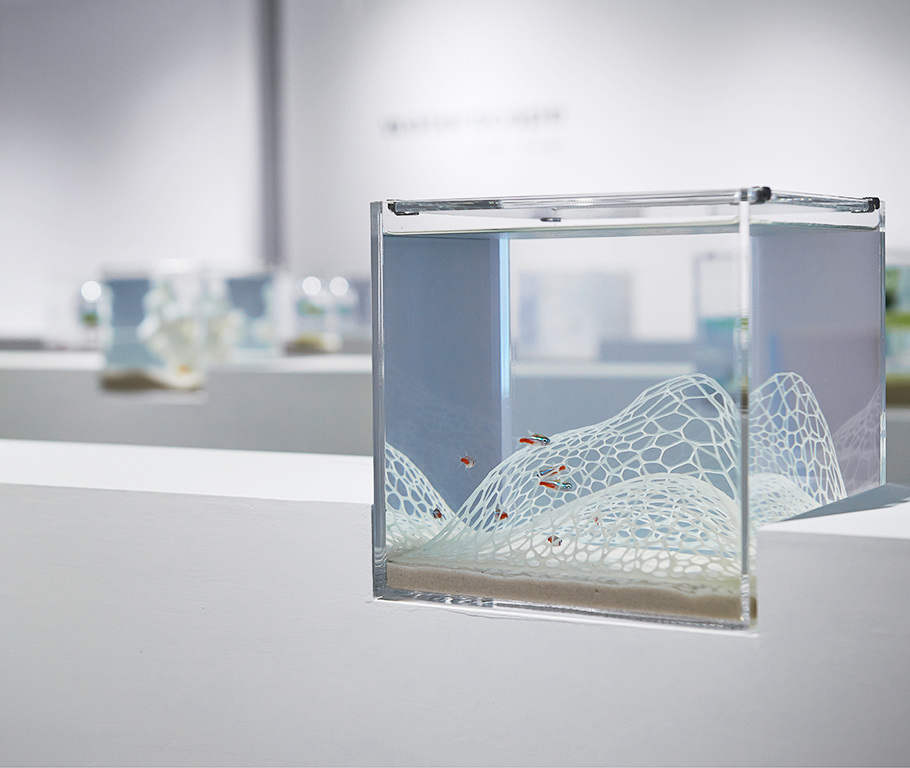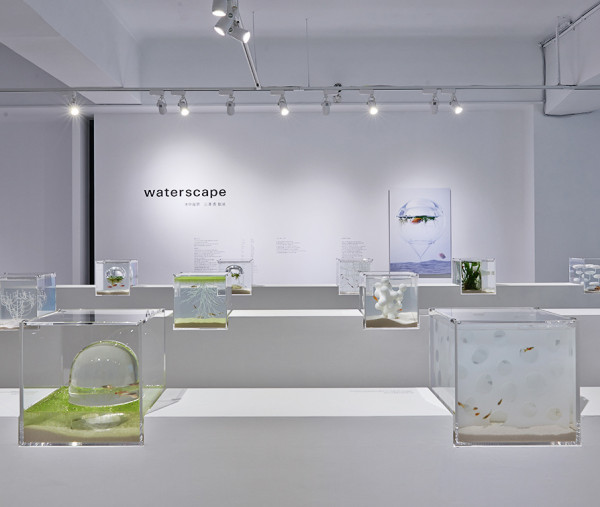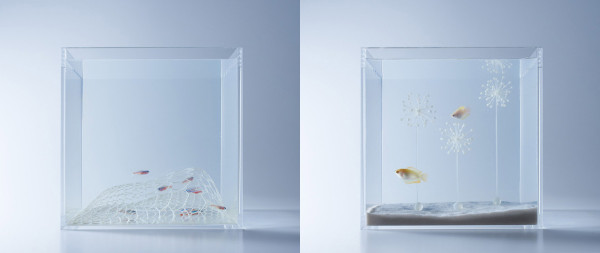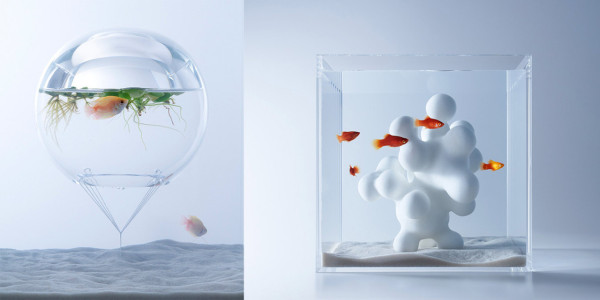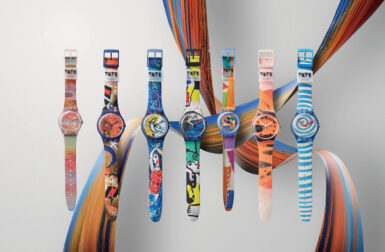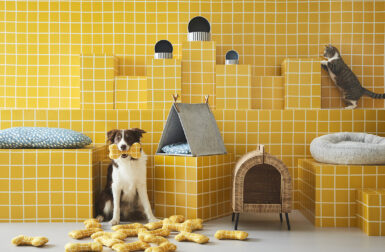Japan is already renowned amongst aquarists for the segment of stunningly composed freshwater landscapes known as aquascapes, underwater arrangements combining the culture’s deep rooted affinity for naturalistic wabi-sabi composition and carefully groomed landscapes with aquarium gear. Japanese aquarist Takashi Amano is credited for creating the style back in the 1990’s, a naturalistic aquatic architectural style that continues today.
Former Nendo alum, Muji protege, and founder of the Misawa Design Institute, Haruka Misawa, recognized an opportunity to make waves—small aquarium bound waves—with a novel redefinition of aquascaping, introducing 3D printed sculptural forms as compositional elements for fish, turtles, shrimp and aquatic plants to interact with: miniature landscapes inspired by the natural, but displaying the modern and artificial output of a 3D printer.
With the aid of 3D designers Kennichi Hashimoto and Kosho Yamasaki, the underwater environments playfully utilize the effects between water and air to create micro-environments where plants can grow within bubbles of air surrounded by enclosures of water and animals can hide and explore. In some instances, Misawa utilizes delicate 3D printed lattice work to mimic the aquatic flora small fish use as shelter and protection.
Misawa explains: “The inner space of this fish tank is created by combining two simple elements of container and water, with an extraordinary world created that differs from the world with air…delicate structures that are prone to damage caused by their own weight on land are able to maintain a stable state because of the relative force of gravity and buoyancy.”
“Underneath the surface of water is a unique environment that exudes an energy which is completely opposite from that which is surrounded by air.” – Haruka Misawa
Misawa’s works have been recently displayed in Taiwan, accompanied by the release of a new book documenting the range of aquascapes in detail, both artistically and technically. Sadly, these sculptural living pieces of art are unique prototypes, explorative works between gravity and buoyancy we’ll all just have to appreciate from a distance.


